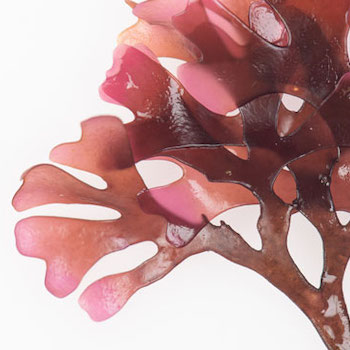Sea moss (Chondrus crispus, also referred to as Irish moss) is a type of red seaweed that grows in the northern Atlantic. As a food source, it is rich in vitamins and minerals. Some parts of the plant are the only natural source of carrageenan, a thickening agent commonly used in processed foods, meat products, ice cream, yogurt, and some cosmetics. As a dietary supplement, it is marketed to help digestion, cleanse the body (“detox”), promote weight loss, support thyroid health, and boost the immune system.
There isn’t enough reliable evidence to confirm whether dietary supplements with sea moss are safe or effective.
Sea moss has gained a lot of attention recently through social media and celebrities who announce it can make you healthier and “forever young.” Some healthcare professionals promote numerous health benefits of sea moss, some even suggesting it as a possible cure for diabetes (although dietary supplements can’t be promoted or used to treat any disease). Sometimes sea moss is referred to as a “functional food,” “nutraceutical,” or “superfood”—terms essentially used to describe foods or products that might benefit health beyond basic nutrition.
What does the science say?
More than 25,000 different species of seaweed exist, in a great variety of forms and sizes, but only a fraction of these, including sea moss, are used for human consumption. Seaweeds used as food are rich sources of macronutrients (proteins containing essential amino acids) and micronutrients (essential minerals such as iron, magnesium, and zinc). They are also good sources of dietary fiber and phytochemicals, which promote good health.
Although research is ongoing with cells and animals, clinical research involving humans is currently lacking to test any of the claims made for sea moss as a dietary supplement.
What’s the concern?
The nutrient composition of sea moss (and any seaweed) can vary greatly depending upon the environmental conditions during its growth. Some nutrients in sea moss can be present at levels exceeding the UL (“tolerable upper intake level,” established by the Institutes of Medicine)—the highest daily intake not likely to be dangerous to your health. For example, levels of iodine present in seaweed (including sea moss) can vary considerably, and too much iodine (more than 1 mg per day) could lead to iodine poisoning or could negatively affect your thyroid health. In addition, toxic materials such as arsenic, mercury, and lead have been found in some seaweeds grown in contaminated waters.
If you’re considering a supplement containing sea moss, make sure the label specifies the type of seaweed present—such as “sea moss,” “Irish moss,” or “Chondrus crispus”—and that it has been tested for heavy metals. It’s also a good idea to search for dietary supplement products that display a third-party certification seal to confirm that the product contains the ingredients listed on the label. And, as with any dietary supplement, it’s important to speak with a healthcare provider before using sea moss (or any seaweed), especially if you are pregnant or breastfeeding, or if you have a thyroid condition.
Bottom line
Sea moss is a type of seaweed rich in nutrients that might promote good health. The concern is that the nutrient composition of sea moss varies greatly depending on conditions during its growth. Also, dietary supplements with sea moss could contain various toxic materials, which could be dangerous to your health. Finally, clinical research with humans is lacking to confirm any benefit of sea moss in dietary supplements.
Published 15 November 2021

